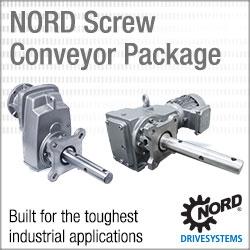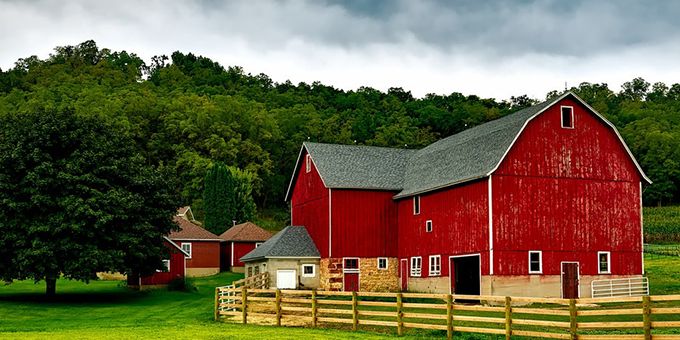Its not a stretch to imagine solo and small farm owners keeping up with the major organizations in the business thanks to improved efficiency, maximized output and faster harvest and care times.
Kayla Matthews | Productivity Bytes
It seems an alien concept to consider: robots and automated systems handling the development and care of modern agriculture.
It involves the merger of sterile, human-made technologies like drones or robotics with more natural processes like sowing plant seeds, maintaining livestock and even food distribution.
However, no matter how strange it seems, the widespread growth and rollout of robotics in the agriculture industry is exactly what’s happening right now, and everyone is all the better for it. Why?
Well, to understand that, one must first consider how robotics fit into modern agriculture, and how the technology is already in use to improve or update processes and systems.
Meeting up With the Modern World: Robotics and Automation in Agriculture
To get the full picture, we need to start with the basics and work our way through some of the more advanced applications.
Farming Basics
The most obvious place to start is with nursery planting and crop seeding. Companies like Harvest Automation and HETO Agrotechnics currently deliver automated solutions — like the Pottenrobot — to handle seeding, potting and general maintenance of living plants, including warehousing.
But most farming takes place outside a greenhouse or nursery.
Traditional plant seeding uses a tool called a broadcast spreader, which usually gets attached to a tractor and driven throughout a prepared field. The tractor drives at a relatively steady pace while the spreader sows the seeds, which may or may not settle in. Obviously, this wastes a lot of seed and isn’t the most efficient way to get things done.
A technology called autonomous precision seeding can improve this through the combination of robotics and geomapping tools.
To start, the technology creates a digital map or overlay of the field and then populates it with details — such as quality, density and makeup of soil.
Rather than spreading seeds haphazardly, a robotic seeding tractor attachment accurately places seeds based on collected data. This setup not only properly distributes seeds, but positions them at the right depth to maximize output.
Maintenance and Care
Once the plants begin to grow, it’s time to move on to maintenance and care. Robotics and automation technologies offer robust solutions to this end — from crop monitoring and analysis to irrigation and weeding.
Thinning and pruning are also major concerns, which involve trimming the density of plants down to increase growth and eventual harvest amounts.
Drones and ground-based robots can handle the monitoring, thanks to tech from PrecisionHawk or devices like the BoniRob.
Robot-assisted precision irrigation tools also handle fertilization and irrigation. Autonomous robots with the proper systems can handle crop weeding and spraying.
RoboCrop, for example, uses computer-oriented vision sensors to detect plants and then hoe spaces between them to remove weeds. Also, robots outfitted with powerful, yet compact, air compressors can use ground-up fruit pits, nuts or natural items to create a weed-killing powder.
As for pruning, Wall-Ye can prune grape vines, and there’s a similar model to handle blueberry plants.
Once the plants or crops ripen, similar robotic devices and systems can both pick and harvest various plants. Something like Wall-Ye or RoboCrop could easily be modified and outfitted to harvest corn stalks, or pull carrots and potatoes.
Shepherding, Herding and Milking
Autonomous robots or drones could also handle the shepherding of sheep and cattle. Drones offer a serious advantage, especially when herding cattle over expansive stretches of land with varying types of terrain. The drones can take the high-view approach to offer a robust view of the landscape and surroundings.
Some ranchers in Australia use helicopters to corral and herd cattle, which can be both expensive and excessive. Drones are a cheaper and more user-friendly alternative.
Various devices can also handle caring for livestock, including milking tools to help extract resources. When combined with IoT sensors, robotics and modern tech can help ranchers and farmers stay better informed about their animals.
The Future of the Industry
As you see, this merger between more modern technologies and age-old industry practices is no pipe dream — it’s happening as we speak. Farmers and workhands no longer have to hunch over in the searing sun manually picking crops.
Automated robots, drones and conventional equipment attachments — such as the ones that hook up to a tractor — can get the job done quickly and easily.
As technology advances, these solutions also become much more affordable and efficient, which is always a good thing.
It’s not a stretch to imagine solo and small farm owners keeping up with the major organizations in the business thanks to improved efficiency, maximized output and faster harvest and care times.
Image by Pixabay
 Kayla Mathews - Contributing Author
Kayla Mathews - Contributing Author
Matthews is a tech journalist and writer, whose work has appeared on websites such as VentureBeat, The Week, VICE's Motherboard and Inc.com. She is also a senior writer at MakeUseOf and the owner of ProductivityBytes.com.
The content & opinions in this article are the author’s and do not necessarily represent the views of AgriTechTomorrow
Comments (0)
This post does not have any comments. Be the first to leave a comment below.
Featured Product


